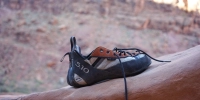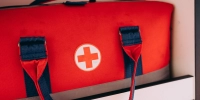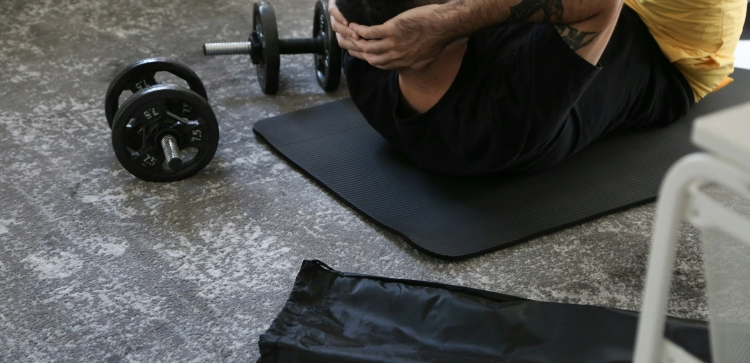







Climbers Point
For indoor bouldering, wear comfortable and flexible climbing shoes, stretchy pants or shorts, a breathable shirt or tank top, and a supportive sports bra. Opt for moisture-wicking fabrics to keep you cool and dry. Consider having a chalk bag or bucket for easy access to chalk. Prioritize comfort and freedom of movement in your clothing choices.
Yes, chalk helps to absorb moisture and sweat from your hands, which can provide a drier and more secure grip while climbing. When you apply chalk to your hands, it can reduce the moisture on your skin, allowing for better friction between your hands and the climbing holds. This can help prevent slipping and improve your overall grip strength.
However, it's important to note that excessive use of chalk can lead to dryness and potential skin irritation. Some climbers may experience dry or cracked skin with prolonged use or in dry environments. To minimize this, it's a good idea to apply chalk in moderation and moisturize your hands after climbing to maintain the health of your skin.
Additionally, it's worth considering the use of liquid chalk or chalk balls, which can provide a more controlled and efficient application of chalk, reducing the amount of loose chalk in the air and potentially drying out your hands less.
Climbing chalk does not have a specific expiration date. It is a simple compound of magnesium carbonate that does not degrade or spoil over time. As long as the chalk remains dry and free from moisture, it should remain effective for its intended purpose. However, over time, chalk may absorb moisture from the air, which can affect its texture and performance. It can become clumpy and less effective at absorbing moisture from your hands. If your chalk becomes clumpy or less effective, it may be time to replace it. Storing your chalk in a sealed container or a chalk bag can help prolong its lifespan and prevent moisture absorption.
The duration of a bouldering session can vary depending on factors such as personal fitness, climbing experience, and individual preferences. Generally, a bouldering session can last anywhere from 1 to 3 hours. This duration allows for an effective workout while avoiding excessive fatigue or overexertion. It's important to listen to your body and take breaks as needed during the session to prevent injury and maintain energy levels. Some climbers may prefer shorter, intense sessions, while others may enjoy longer sessions with more rest periods in between attempts.
You can wear glasses while bouldering, and many climbers choose to do so. It's important to ensure that your glasses fit securely on your face to prevent them from slipping or falling off during dynamic movements. Using a sports strap or retainer can help keep your glasses in place. Additionally, consider wearing glasses with impact-resistant lenses or exploring options for protective eyewear to keep your eyes safe during close contact with the rock. Keep in mind that climbing can be a physically demanding activity, and your glasses may fog up due to perspiration. To minimize fogging, you can use anti-fog wipes or sprays. If wearing glasses becomes too cumbersome, you may also consider using contact lenses as an alternative. Ultimately, find the option that provides the best balance of comfort, vision, and safety for your bouldering sessions.
No, it is not typical to wear socks with rock climbing shoes. Climbing shoes are designed to be worn without socks in order to maximize sensitivity and control on the rock. Wearing socks can create a barrier between your feet and the shoe, reducing the level of precision and feel. Additionally, socks can cause your feet to slide inside the shoe, leading to discomfort and potentially compromising your grip on holds. Most climbers prefer to wear climbing shoes directly on their bare feet to maintain the best connection and performance. However, if you have specific foot conditions or prefer to wear socks for hygiene reasons, you can look for thinner, low-profile socks specifically designed for climbing to minimize the impact on your climbing experience.
When wearing climbing shoes, it is common for your toes to be slightly curled. This helps in engaging the toe muscles and maximizing your ability to grip holds. The degree of curling may vary based on personal preference and the type of climbing you are doing. It's important to find a shoe that allows for a snug fit and provides enough toe curl to optimize your climbing performance while still maintaining comfort. Trying on different shoes and consulting with experienced climbers can help you find the right fit and level of toe curl for your climbing needs.
When it comes to buying climbing shoes, sizing preferences can vary among climbers. However, in general, it is not recommended to buy climbing shoes a size bigger. Climbing shoes are designed to provide a snug and precise fit, allowing for better control and sensitivity on the rock. Wearing shoes that are too large can lead to decreased performance and difficulty in accurately placing your feet on holds. It is important to find a balance between comfort and a snug fit. Many climbers prefer a snug fit that is slightly uncomfortable at first but molds to the shape of their feet over time. Trying on different sizes and brands, and consulting with experienced climbers or gear specialists, can help you find the right fit for your climbing style and personal preference.
There are a few signs that can indicate if your climbing shoes are worn out and need to be replaced:
- Sole Wear: Check the rubber sole for significant wear. If you notice a smooth or shiny patch in the middle of the sole, or if the edges are worn down, it's a sign that the shoes have seen better days. A worn-out sole can affect your grip and performance on the rock.
- Decreased Sensitivity: Over time, the sensitivity of climbing shoes can diminish. If you find it harder to feel the rock or accurately gauge your footholds, it might be a sign that the shoes have lost their sensitivity due to wear.
- Toe Box Deformation: Examine the shape of the toe box. If the rubber is excessively stretched or the toe box has become misshapen, it can affect your ability to accurately place your toes on small holds.
- Lining Damage: Inspect the lining of the shoes. If you see holes, tears, or excessive wear in the lining material, it can cause discomfort and reduce the overall lifespan of the shoes.
- Odor and Hygiene: If you've tried various methods to eliminate odor and maintain hygiene but your shoes still emit a persistent and unpleasant smell, it could indicate a breakdown in the materials of the shoes, making them less effective and less pleasant to wear.
The lifespan of climbing shoes varies depending on various factors such as frequency of use, climbing style, and personal preference. On average, a pair of climbing shoes can last anywhere from 6 months to 2 years. If you climb regularly, say a few times a week, you might expect them to last around 6 to 12 months. However, if you climb less frequently or take good care of your shoes, they may last closer to the 1 to 2-year range. It's important to monitor the condition of your shoes and replace them when the rubber sole wears down significantly or when they become uncomfortable or ineffective for climbing.




